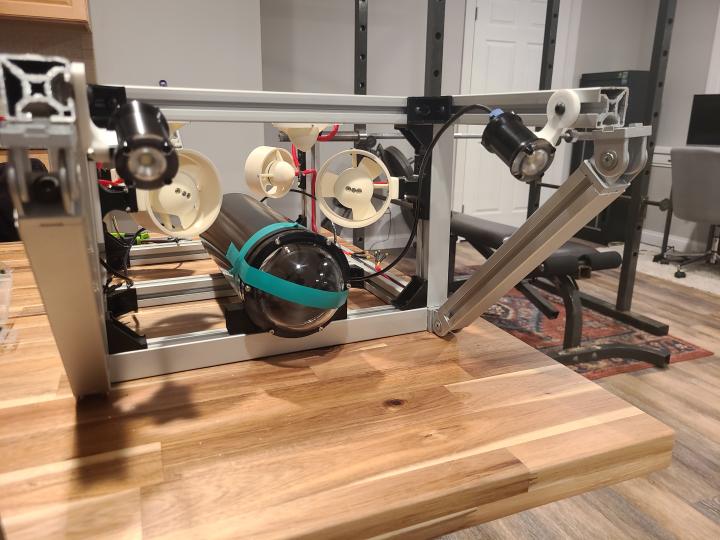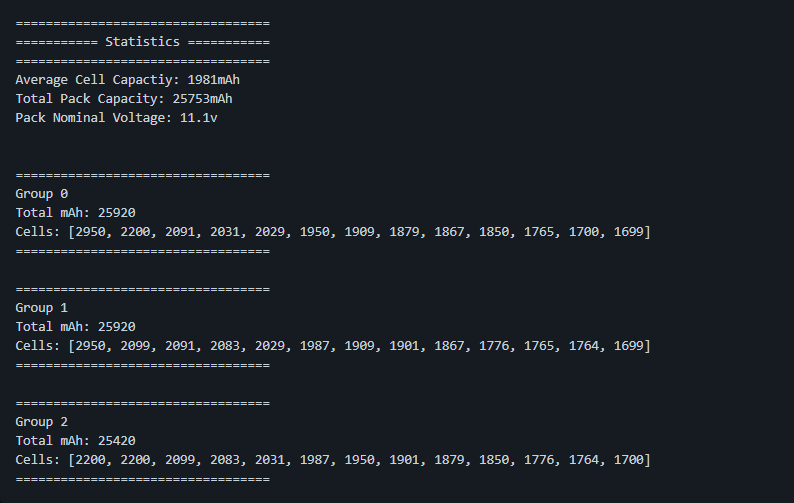Introduction
If you read part 1 the rov has a frame, motors, and a housing for the electronics. The next issue to address is the power supply. I’ve been looking at doing a battery based on the 18650 cell for some time and finallly found a cheap supplier for 18650 cells. I grabbed a bunch of modem batteries from https://batteryhookup.com/ and got to work.

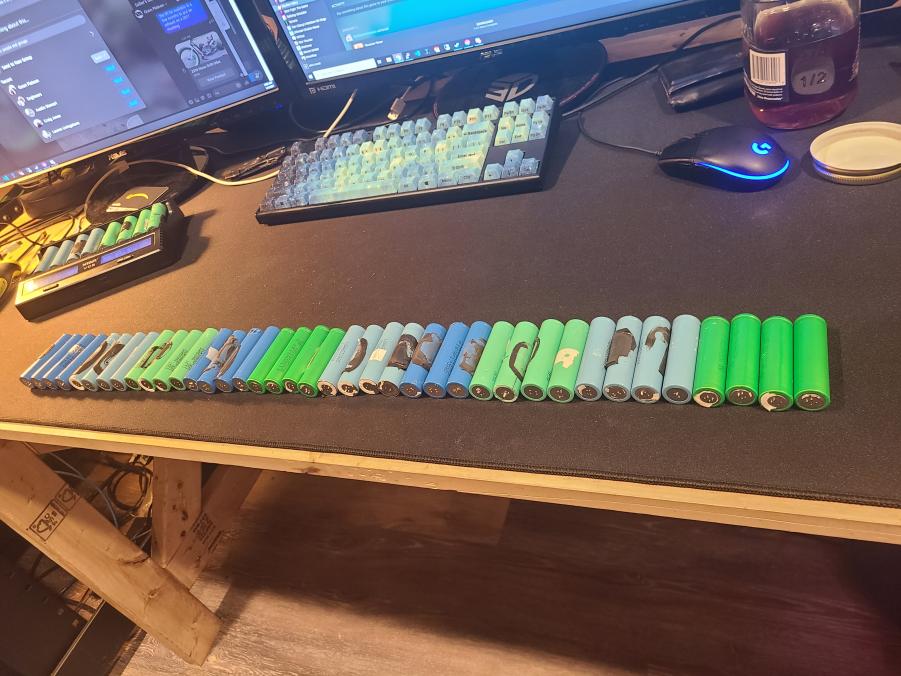
Battery Design
The ESC’s (Electronic Speed Controllers) for the thrusters are rated for 11.1v. This means we will need a 3s16p battery, 3 series and 16 parrallel (Considering we harvested 48 cells from the modem packs). This produces a intersting engineering problem. Since the 18650 cells we are using have varying capacities, each of the 3 cell groups sum mAh capacity must be matched to its neighbors. To do this I whipped up a quick algorithm in python to divy up the 18650 cells into 3 groups keeping their sum capcity the same. The code can be found here: https://github.com/BuckarewBanzai/Battery-Pack-Partitioner. For anyone else building packs from used cells I would recommend https://www.repackr.com/ to calculate your series cells. At the time of writing my script I was unaware of repackr and it appears to do a better job at balancing series cells.
Each cell tested for internal resistance. Generally a higher internal resistance indicates a worn cell.
3D printing a quick holder for the cells to keep them organized while testing.

Pack design
Now that we know the electrical needs of the pack we can make a housing for it. I plan on using another 4 inch aluminum housing from blue robotics for this battery. I went through a few prototype designs before I settled on one that I liked. The main desires when designing this pack was I wanted it to be easily maintainable. In the event one of the 18650 cells died I wanted a way to easily replace it. I also wanted the pack to be safe and have internal fuses for each cell. From here I drew inspiration from Tesla car packs and their thin wire fuses. The first image below was one of the first iterations of the battery pack before I settled on the vertical configuration.
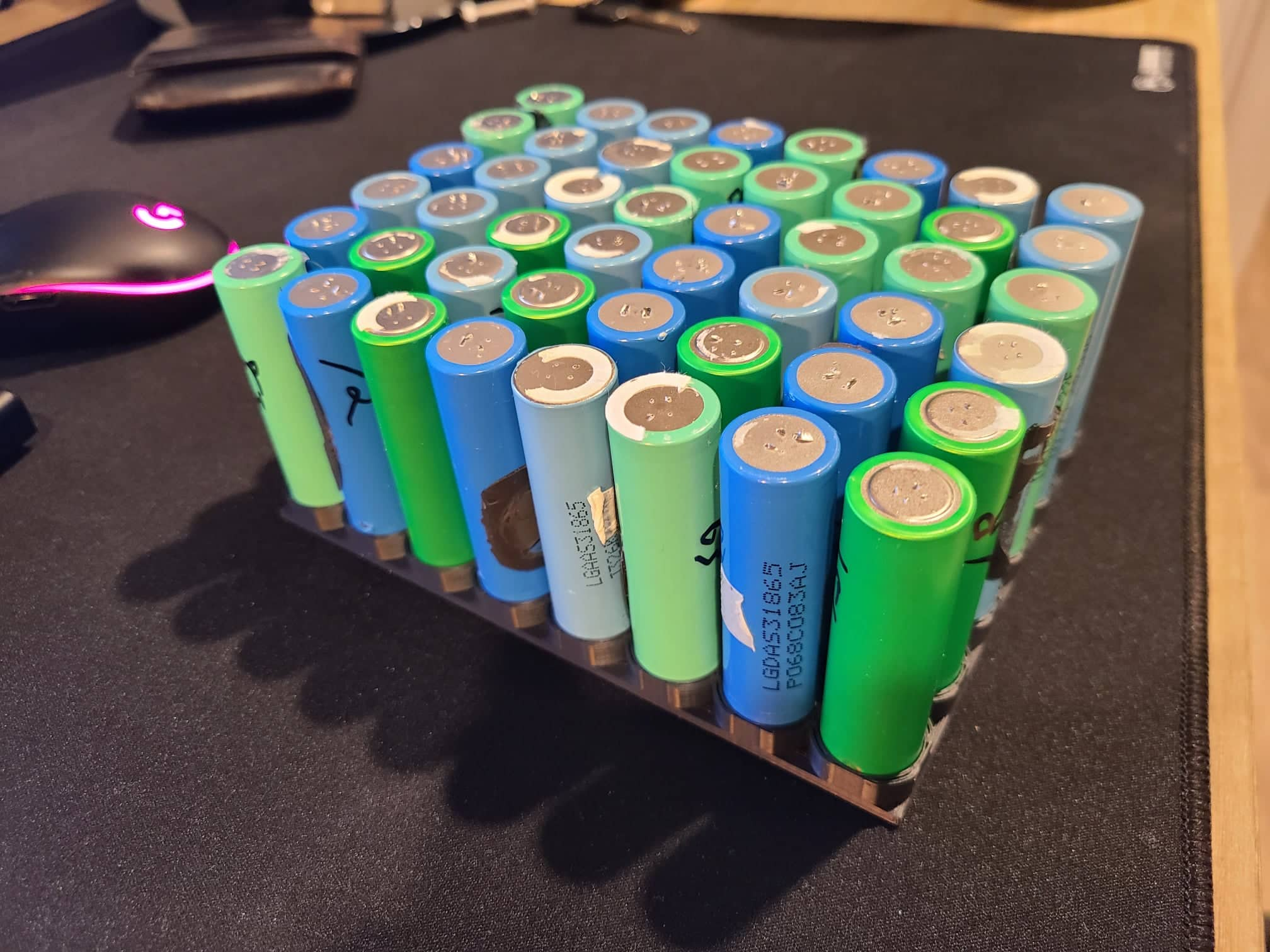
Battery Housing
I designed a housing for the cells and 3d printed it on my cr-10 v2. I’m really happy with how this case turned out and it fits inside the blue robotics housing very well. This pack housing doesnt have the packing efficiency of earlier designs but definitely seems easier to maintain in the long run. The CAD files can be found here: https://www.thingiverse.com/thing:4719622
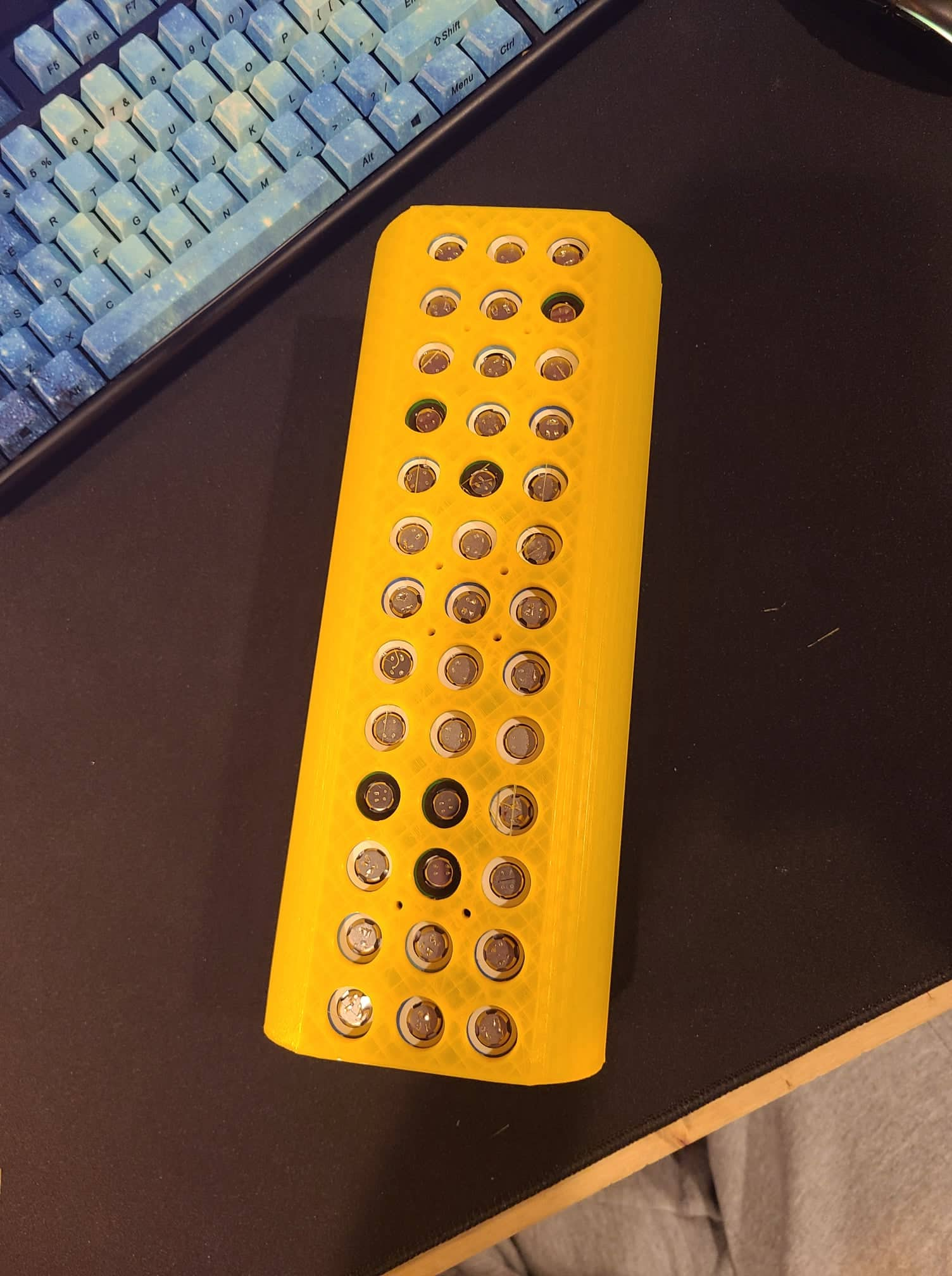
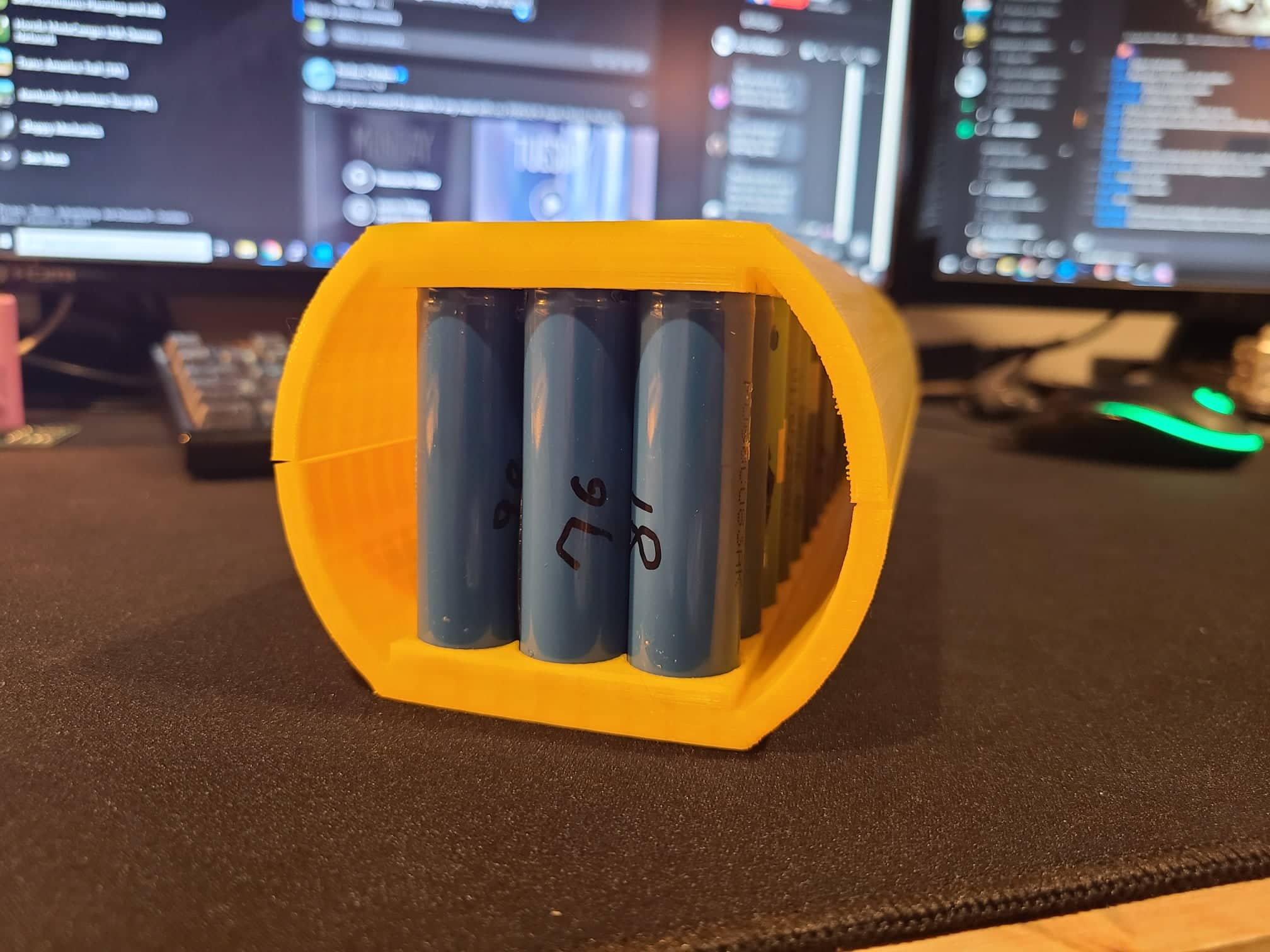
Stay tuned for part 3 where we assemble the pack and test the capacity and do final assembly. Hopefully this becomes a viable solution for the ROV battery.
